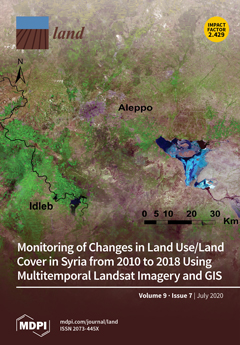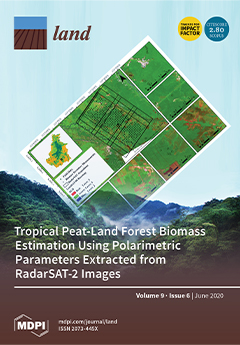Rural settlement consolidation (RSC) has a critical role in facilitating the transformation of human settlement and land use transition in the rural revitalization process. RSC involves a diversity of stakeholder groups with complex and intertwined concerns. It is therefore crucial to identify…
Globally, coastal communities are impacted by hazards including storm events, rising water levels, and associated coastal erosion. These hazards destroy homes and infrastructure causing human and financial risks for communities. At the same time, the economic and governance capacity of these…
The population of a considerable number of rural areas in the interior of Spain is in decline. Faced with this problem, various institutions are launching initiatives to enhance the territorial heritage (natural and cultural) of these areas and, starting with a minimum of economic…
The wildland–urban interface (WUI) occurs at the intersection of houses and undeveloped wildlands, where fire is a safety concern for communities, motivating investment in planning, protection, and risk mitigation. Because there is no operational definition of WUI based on where fires in fact…
This paper reviews the recent literature dealing with farmland protection (FP) policies in developed countries from a planning perspective, with a specific focus on the Mediterranean region. It provides coverage of French language papers that may have been omitted in previous reviews. While the…
Housing land consolidation and relocation has been widely implemented in rural China as a policy tool to reduce the area of built-up land, reclaim agricultural land, and redistribute the use of land. Despite of the large scale of implementation, the impact of this policy on the daily life of…
For two decades, increasing concerns about urban sustainability have driven Australian metropolitan planning efforts to call for fundamental changes to existing urban forms. These changes are intended to develop more compact cities characterised by a poly-nodal network of dense activity centres…
Landscape heterogeneity generates significant influences on economic activity. Present-day publications in landscape planning focus more and more on a participatory approach and a communication process. By contrast, we focus on nature-based criteria aimed at proper adaptation of planning…
As technical and technological progress takes place, there is dissonance between teaching good engineering and technological techniques and respect for the landscape. Engineering students are educated to act as initiators and performers of activities that change space. The purpose of this study…
Digital soil mapping (DSM) is currently the primary framework for predicting the spatial variation of soil information (soil type or soil properties). Random forests and similarity-based methods have been used widely in DSM. However, the accuracy of the similarity-based approach is limited, and…
With the widespread use of three-dimensional (3D) geographic information technologies, studies for 3D digital representation of property units in cadasters have increased in recent years. In Turkey, a project named 3D City Models and Cadasters was initiated by the General Directorate of Land…
Sandification has become a major obstacle to China’s regional farmland protection, economic development, and ecological civilization construction. It is urgent to adopt advanced ideas and practical actions to reverse the sandy land. Structural consolidation theory was introduced to rehabilitate…




